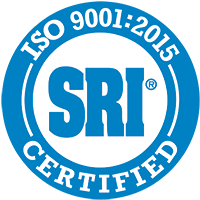Scientific Injection Molding, Ingrained in Our Culture
Becoming a world-class injection molder means thinking differently, believing in constant innovation and never be satisfied with good enough. Since 1970, P&P Industries has built success based on our ability to adapt, innovate and grow. As our company grows, we continue to strive to improve our quality and services, delivering innovative solutions that our customers can count on repeatedly. Our belief in this philosophy is what ultimately led us to scientific molding, a principal that quickly became a part of our culture and brand identity. Scientific injection molding provided us with direction, and inspired our tagline, “Plastics With Purpose,” as we take a scientific approach to everything that we do.
What is Scientific Injection Molding?
Scientific injection molding is a systematic, data-driven approach that utilizes a comprehensive view of the entire molding process to understand how the plastic will behave. This process eliminates traditional trial and error methods and allows every production, design and material selection decision to be driven by the data through the scientific molding process. The scientific injection molding approach leaves no rock unturned. This process gives us the ability to produce the most repeatable, high-quality part possible, every time.
At P&P, our processes are developed through adhering to the principles of scientific molding. The method includes collecting data and rigorous testing that drive every decision we make. The data that we collect provides the foundation for our repeatable processes, which allow us to maintain high levels of quality, and sustained success. Scientific molding allows us the ability to provide upfront detection of possible issues that may arise downstream. In this process, every part is meticulously reviewed for any potential design improvements, ultimately helping to keep projects on budget and on time.
The History of Scientific Injection Molding at P&P
In 2001, an OEM approached P&P with an interest in partnering on a joint project to research the potential benefits of scientific molding and the utilization of in-cavity transducers. The timing of this opportunity was perfect, as P&P had just purchased a new molding machine that would be an ideal fit for the project. Working closely with the OEM, our team quickly recognized the enormous potential in scientific molding to help us become not only a more reliable molding company but eventually a world-class injection molder. Led by Tony Nardi, Senior Vice President at P&P, our team began researching scientific molding and in-cavity sensors to establish new best practices for P&P and eventually adopted the philosophy we would utilize to take the company to the next level.
Taking a top-down approach, Tony traveled to RJG Inc., the recognized international authority on Scientific Molding. Tony spent six weeks on-site at their headquarters and completed all three levels of the Master Molder certification. Using this as a base, Tony came back to P&P and began teaching our team of engineers and molders, bringing our entire team up to speed on these fundamentals. To achieve this, we began utilizing universal setup sheets to educate our workforce in scientific molding.
In 2004, P&P had the opportunity to earn both the Rigorous Mold Tryout and Mold Building certificate through RJG. The certification empowered our team to develop a robust internal process that meets all of the RJG guidelines from current products and new product mold trails. This process of all new tools, transfer tools and tools that were currently in our facility. As part of earning this requirement, RJG’s sent a team on-site to P&P to provide further education and assist us in incorporating their defined methodology in our facility. To achieve and maintain this certification, our team had to prove that we understood the processes, and we were required to have a Master Molder III on-site at all times. Currently, P&P is one of just eight companies in the U.S. to be a certified RGJ tryout shop.
The Process
The first step of the scientific injection molding process starts when a customer contacts our team to discuss a project. Our engineers meet with the customer to understand the scope of the project. Once the engineer finds a product optimized for moldability, the part goes through a Design Process Assembly Review (DPAR). A cross-functional team completes this review made up of quality engineers, process engineers, design engineers, toolmakers, and the customer. The team confirms if the part is moldable, understands the end-use of the piece, and then identifies the material to meet end-user performance. The DPAR also provides an opportunity for our process engineers to provide valuable input to optimize the process, ultimately reducing the time to market and identifying potential cost savings. Depending on the complexity of the part, we may suggest utilizing simulation software to help in the part design phase.
During the scientific injection molding process, it is crucial to understand the four critical components:
- Material
- Part Design
- Tooling
- Processing
When considering material selection, identify two to three different plastic resins that meet the customer’s requirements when possible. Complete a thorough cost analysis with an availability study to help determine the lowest cost option and still meet the needs of the customer. The plastic resin selected is essential in part design, Tooling, and Processing. A well-designed part, choosing the right material, tooling, and processing, are all factors that can significantly improve the ability to bring a repeatable quality product to the market quickly.
A tool designed and built to the material and part design specified will return year after year repeatability. Identifying where to locate the waterlines within the tool is crucial. The location of the waterlines could have a significant role in quality and cycle time, significantly impacting part cost. Identifying gate locations and type of gate is also vital to quality and cycle time. Understanding the geometry of the part helps to identify potential lifters or side actions that increase the cost of the tooling. Overall, a properly designed and built tool plays a crucial role in producing a repeatable quality part at an acceptable price.
Once the tool is received and inspected to the requirements set forth during the design phase, our Processing Engineers take the lead. Every mold will go through the rigorous mold trial process (RMT). During this trial, our team completes a systematic, step-by-step process to identify a universal set up sheet approved for production. At the same time, our quality engineers develop our process work instructions. The creation of the setup sheet includes actual output values, not press settings. Our process engineers will control the process with these actual readings within the process. We also can utilize an eDART to confirm our molding machine is optimized. Additionally, a transducer in the cavity allows us to monitor the pressure for repeatability and early detection of quality issues. A sensor within the tool will enable us to see within the cavity during injection and holding to maintain the ultimate quality.
Why We Use Scientific Injection Molding
Our commitment to scientific molding is what makes us unique. In our scientific molding process, we identify every variable and document actual value. Through the utilization of this data, we can troubleshoot the process in the future. Throughout the process, every decision made is backed by scientific data to increase efficiency, improve quality, and detect part failure earlier.
Scientific injection molding helps us to standardize the troubleshooting process. Traditionally, processing and troubleshooting rely heavily on individuals with considerable experience in the industry. As those experienced employees retire, replacing them becomes increasingly difficult. To proactively solve this issue, we depend on scientific molding to allow us to train and educate the workforce to properly troubleshoot issues. Because this is a process driven by data and documented results, the scientific approach creates a much faster learning curve for those entering the industry. Also, it has proven to be much more conducive to overall efficiency by promoting a team approach.
At P&P, scientific molding is how we will succeed. From the way we mold our products, to continuing to pinpoint specific ways for us to improve our processes, we use a scientific approach in everything we do. It’s who we are and drives what “Plastics with Purpose” means to us.
Ready to see what P&P can do? Let’s discuss how we can help you.

